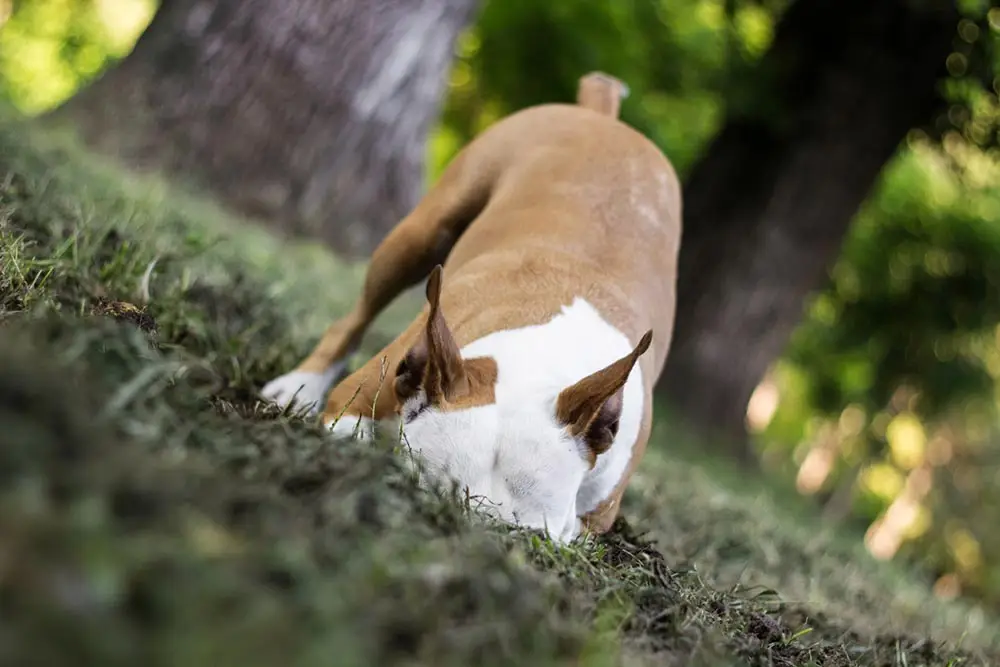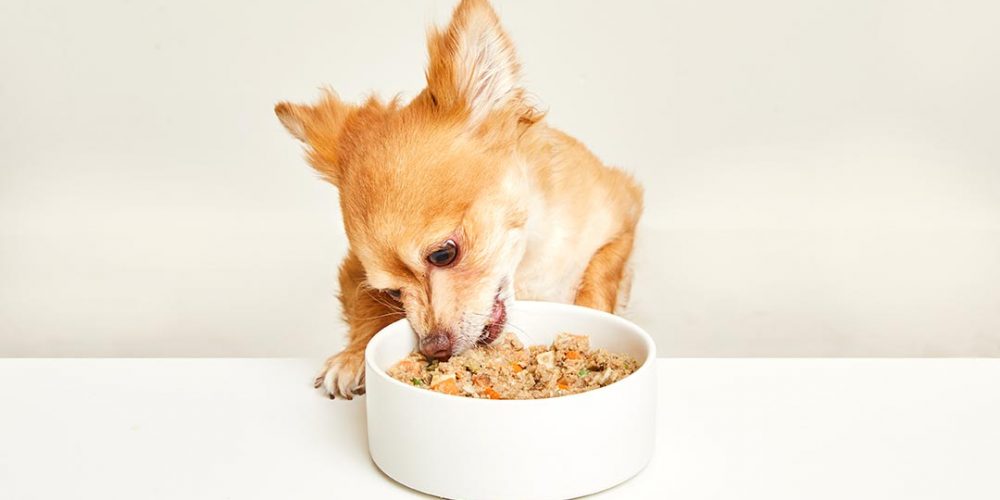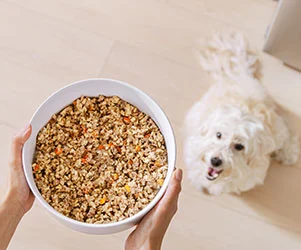If you’ve ever watched your dog carry a mouthful of kibble into the living room only to stash it under a rug or “bury” it behind a couch cushion, you’re not alone. Many pet parents witness this quirky behavior and wonder, “Why do dogs bury their food?”
The answer lies deep within the history of wild dogs, canine behavior, and the ancient survival instincts of these animals. While burying or hiding food can be harmless and even amusing, it may also sometimes indicate behavioral issues or unmet needs.
Let’s explore the fascinating science behind why dogs bury their food, which dog breeds do it most, and when it may signal a problem that calls for the help of a dog trainer or behaviorist.
What are the Wild Roots of Caching Behavior?
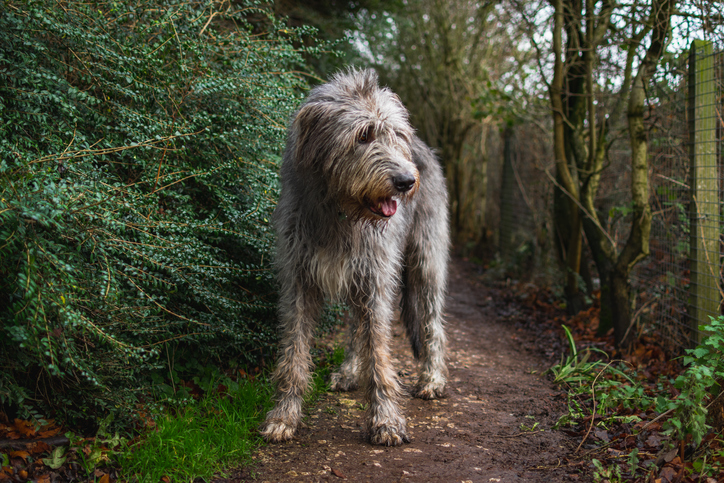
To understand why dogs hide or bury their food, we need to look back at their wild ancestors. Long before domestic dogs curled up on our couches, their ancestors, including wolves, coyotes, and other wild dogs, had to fight for every meal. Food wasn’t guaranteed. Once they found or caught something to eat, they had to make it last.
This survival strategy gave rise to a behavior known as caching, the act of hiding or burying food to return to later. Wolves have been observed burying extra food, such as meat, bones, and even parts of small prey, to avoid spoilage or theft from scavengers. This “stash” helped them manage the uncertainty of their next successful hunt. Even modern canine behavior reflects this powerful evolutionary legacy.
Though your dog might enjoy reliable mealtime in a climate-controlled home with a full food bowl, those natural instincts can still kick in. Especially when there’s excess food or they sense uncertainty around their next meal.
Is It Natural Behavior or Problematic Habit?
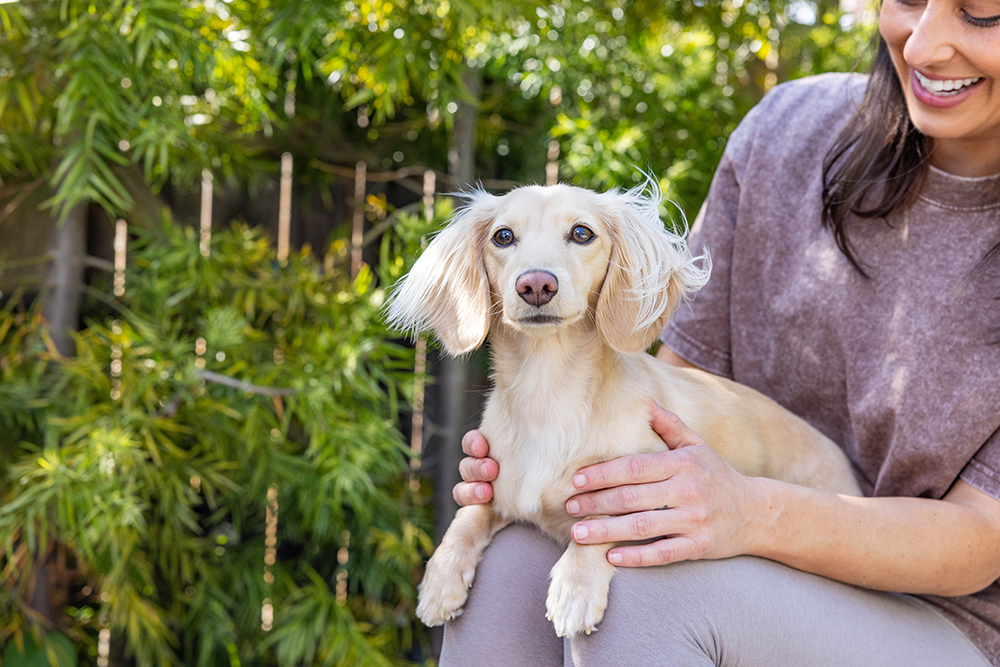
For many pet parents, seeing their dog bury food or hide a favorite toy under a blanket might seem like a harmless quirk. In most cases, it is. However, this behavior can fall on a spectrum, from perfectly normal to potentially problematic.
Understanding the underlying motivations behind food burying is essential for determining whether intervention is needed.
Survival Instincts from the Past
One of the most fundamental reasons dogs bury their food stems from deeply ingrained survival instincts. Long before domestication, wild dogs and their ancestors had to hunt for every meal.
Since they didn’t know when they’d eat again, they developed a caching behavior. This survival tactic ensured they had a backup stash during times of scarcity.
Even though domestic dogs today typically have regular meals and consistent access to food, these ancestral behaviors remain part of their genetic programming. Burying food is simply an expression of that instinct, a kind of leftover survival reflex in a world where it’s no longer strictly necessary.
Overfeeding
Dogs who are fed more than they can or want to eat often engage in burying or hiding excess food. In these cases, the behavior may not be about survival but rather a reaction to having too much.
If a dog is already full or uninterested in finishing a meal, it might instinctively try to save the remainder by hiding it, just as its wild ancestors would have done. Pet parents may interpret this as pickiness or fussiness, but the root cause could be a portion size that doesn’t match the dog’s true needs.
Overfeeding may lead not only to burying behavior but also to obesity and gastrointestinal issues. Evaluating whether a dog is receiving the appropriate amount of food for its size, activity level, and breed is a good starting point if burying becomes frequent.
Resource Guarding
Another potential explanation for food burying is resource guarding. This behavior is often seen in rescue dogs or those who have experienced food insecurity or competition in the past. These dogs may feel a strong need to protect their resources, even if food is now consistently available.
Burying food becomes a way to keep it safe from perceived threats, including other pets or even humans. In this context, hiding food is not just a quirky habit, it may be a sign that a dog feels anxious about losing what it has.
This behavior can escalate into aggression or guarding tendencies, making it important to address it early on. Working with a qualified dog trainer or behaviorist can help dogs feel more secure and reduce the need to hide or hoard food.
Anxiety or Stress
Dogs, much like people, respond to stress in different ways. Some may bark or pace, while others may turn to repetitive behaviors like burying things. When a dog buries food out of anxiety, it’s often less about saving it for later and more about finding a way to cope.
New environments, household changes, loud noises, or lack of routine can all cause a dog to feel unsettled. In some cases, dogs may even bury toys, treats, or random household items as a way of self-soothing. Identifying the source of anxiety and providing reassurance through routine, training, and calming environments may help reduce this behavior.
Mental Stimulation and Play
Sometimes, burying food is simply fun for dogs. Dogs are intelligent animals that need mental and physical stimulation. For certain breeds, especially those with a strong hunting, digging, or scenting heritage, burying is part of how they explore and interact with their environment.
Terriers, dachshunds, and beagles, for example, often bury food or toys as part of instinctive play behavior. If a dog doesn’t have enough outlets for mental engagement, it may channel that energy into hiding kibble or chew bones around the house.
Offering enrichment activities like food puzzles, scent work games, or training exercises can redirect this natural behavior into healthier, more constructive play.
Are Certain Breeds are More Likely to Bury?
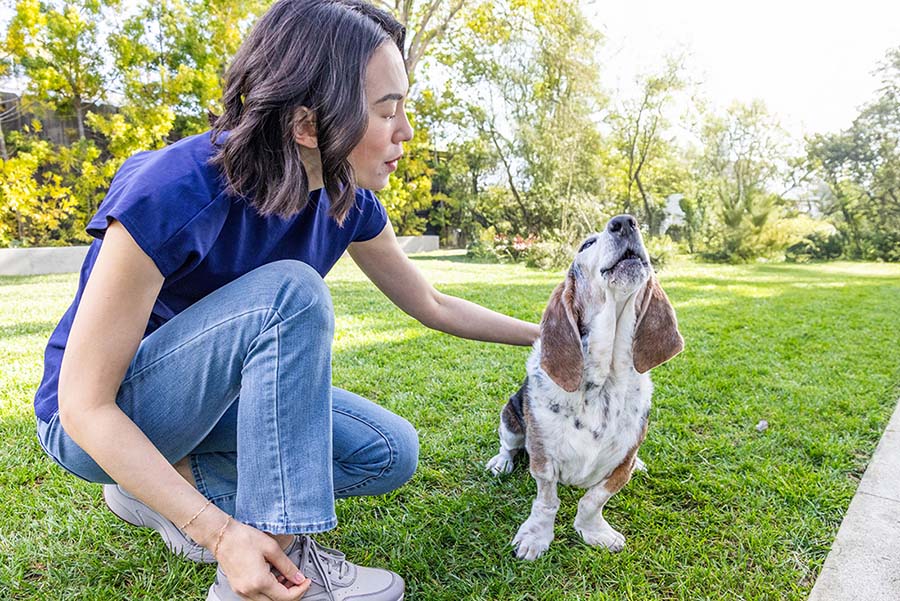
While any dog might bury food, some dog breeds are more prone to caching behaviors than others, especially those bred to hunt or dig.
Beagles
As scent hounds with an intense prey drive, beagles are notorious for digging and stashing. They may treat dog food like “prey” and hide it for later enjoyment.
Terriers
Small but mighty, terriers were bred to root out vermin and dig through burrows. Their love for burying things is hardwired into their DNA.
Dachshunds
Originally bred for badger hunting, dachshunds often dig instinctively and enjoy burying items like food, toys, or treats.
Basset Hounds
With their strong noses and tracking heritage, Basset Hounds may exhibit caching behaviors, especially if they’ve experienced overfeeding or boredom.
These dog breeds are more likely to exhibit hiding or burying behaviors due to their historical roles. They benefit from targeted dog training and enrichment activities to help channel those natural instincts into productive behaviors.
When Should You Be Concerned?

While food burying can often be chalked up to natural instincts or simple quirks, there are times when the behavior may indicate something deeper, something that deserves closer attention from a pet parent. The key is to observe the frequency, context, and emotional state of the dog.
For instance, if a dog is regularly hiding food rather than eating it and is also showing a decreased appetite, that may signal an underlying health issue. Dental problems, gastrointestinal discomfort, or even certain neurological conditions might make eating unpleasant, prompting the dog to stash the food away instead.
Behavioral red flags can also emerge. If a dog growls, snaps, or becomes visibly agitated when someone approaches its buried stash, that may be a sign of resource guarding. While this behavior is rooted in natural protective instincts, it can become problematic, especially in multi-pet households or homes with children. Early intervention with positive reinforcement training can help curb this issue before it escalates.
Obsessiveness
Another concern is when burying becomes an obsessive behavior. Dogs who constantly hide toys, food, and random objects, especially when they do so with urgency or anxiety, may be displaying signs of compulsive behavior. This kind of behavior often accompanies stress or environmental deprivation.
Dogs with unmet physical or emotional needs may resort to repetitive actions as a coping mechanism. If burying happens in a frenzied or panicked way, or the dog appears distressed afterward, it may be time to consult a veterinary behaviorist.
A sudden change in behavior is another reason to be vigilant. If a dog that never buried food before suddenly starts doing it regularly, that shift could point to new stressors or health changes. Perhaps a new pet has been introduced into the household, the feeding routine has changed, or something about the dog’s environment is no longer comfortable or predictable. Dogs are highly sensitive to change, and their behaviors often reflect what they cannot communicate in words.
Ultimately, while food burying can be a harmless, even endearing part of canine life, it’s essential for dog owners to stay attuned to the context in which it occurs. If the behavior begins to affect the dog’s health, quality of life, or harmony in the home, it may be time to dig deeper—just like the dog does—and get to the root of the issue with the help of a qualified professional.
What Can Pet Parents Do?

If your dog occasionally hides food or buries kibble, it’s likely a normal expression of their natural behaviour. But here are some ways to manage or redirect the behavior:
1. Evaluate Feeding Habits
Check if you’re offering extra food or multiple treat types in close succession. Dogs with excess food often try to save it. Use portion-controlled meals and avoid overfeeding.
2. Stick to a Schedule
Consistent mealtime routines help prevent food-related anxiety. Dogs that know when they’ll eat next are less likely to stash their dinner.
3. Add Mental Stimulation
Dogs often bury items out of boredom. Offer puzzle toys, sniffing games, or agility activities to keep them engaged. This is especially useful for beagles, terriers, and other energetic breeds.
4. Limit Access to Hiding Spots
If your dog is hiding food under beds or couches, try to limit access to those areas, or feed them in a calm, distraction-free zone.
5. Positive Reinforcement Training
A dog trainer can help redirect burying items behavior through reinforcement-based dog training. Avoid punishment, which can increase anxiety and make the behavior worse.
6. Use High-Value Treats Strategically
Save irresistible treats for training or bonding. Giving a high-value snack when your dog is full is a recipe for caching behavior.
Final Thoughts: Understanding the Burying Instinct
Whether it’s hiding a biscuit under the sofa or digging a hole in the yard, dogs bury food and toys because of deeply ingrained natural instincts that harken back to their wild ancestors. While the behavior can be fascinating and even entertaining, it’s important for dog owners to monitor it, especially in rescue dogs or breeds like beagles, terriers, and basset hounds, where the behavior may be more pronounced.
Understanding why dogs bury their food helps pet parents create a more enriching and supportive environment. With the right tools, from smart feeding practices to expert dog training, you can ensure your beloved doggy feels safe, stimulated, and less inclined to stash their dinner for a rainy day.
If your dog’s caching behavior seems obsessive or causes problems in the home, don’t hesitate to consult a professional behaviorist or dog trainer. Sometimes, a little guidance is all it takes to turn puzzling dog behaviors into better understanding and a better bond.
This content is for informational use only and does not replace professional nutrition and/or medical advice, diagnosis, or treatment. It is not a substitute for and should not be relied upon for specific nutrition and/or medical recommendations. Please talk with your veterinarian about any questions or concerns.
Sources
Mahoney, Sean M, and Bret Pasch. 2024. “Evolutionary Lability of Food Caching Behaviour in Mammals.” Journal of Animal Ecology 93 (7): 862–75. https://doi.org/10.1111/1365-2656.14093.
Vetter, Sebastian, Louise Rangheard, Lena Schaidl, Kurt Kotrschal, and Friederike Range. 2023. “Observational Spatial Memory in Wolves and Dogs.” PLOS ONE 18 (9): e0290547–47. https://doi.org/10.1371/journal.pone.0290547.
“Why Do Dogs Bury Food | the Kennel Club.” n.d. Www.thekennelclub.org.uk. https://www.thekennelclub.org.uk/health-and-dog-care/health/health-and-care/a-z-of-health-and-care-issues/why-do-dogs-bury-food/.
Downes, Martin J., Catherine Devitt, Marie T. Downes, and Simon J. More. 2017. “Understanding the Context for Pet Cat and Dog Feeding and Exercising Behaviour among Pet Owners in Ireland: A Qualitative Study.” Irish Veterinary Journal 70 (1). https://doi.org/10.1186/s13620-017-0107-8.
Jacobs, Jacquelyn A., Jason B. Coe, David L. Pearl, Tina M. Widowski, and Lee Niel. 2018. “Factors Associated with Canine Resource Guarding Behaviour in the Presence of People: A Cross-Sectional Survey of Dog Owners.” Preventive Veterinary Medicine 161 (161): 143–53. https://doi.org/10.1016/j.prevetmed.2017.02.005.
“Why Does My Dog Try to Bury His Food? – Vet Help Direct.” 2023. Vet Help Direct. November 17, 2023. https://vethelpdirect.com/vetblog/2023/11/17/why-does-my-dog-try-to-bury-his-food/.
Kiełbik, Paula, and Olga Witkowska-Piłaszewicz. 2024. “The Relationship between Canine Behavioral Disorders and Gut Microbiome and Future Therapeutic Perspectives.” Animals 14 (14): 2048. https://doi.org/10.3390/ani14142048.

